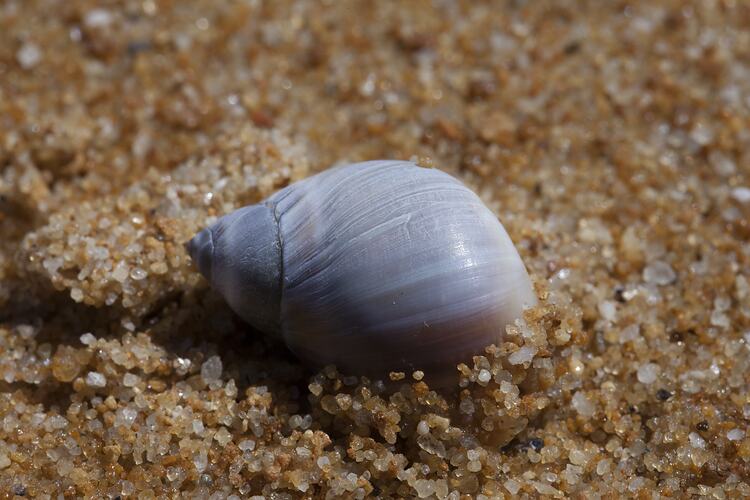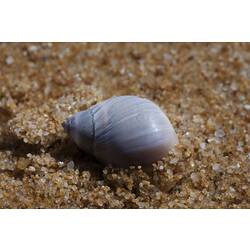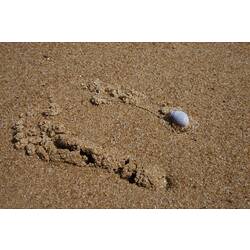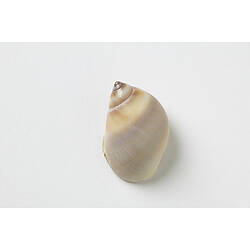General Description
Shell rounded at base, pointed at the end. Grey-pink with a brown or orange stripe around the upper part of each segment (whorl). Pointed tip of shell (apex) usually blue-grey. Aperture semi-circular. Operculum (flap that covers aperture) horny rather than shelly, thin. Shell up to 5 cm long.
Biology
Moon Snails leave trails behind them as they move across sand at low tide. Like all snails in this family, they are predators, eating bivalves and other sea snails by drilling a hole into the shell, using their rough radular and acid, through which they extract the soft body. These holes have a distinctive countersunk shape, being narrower at the bottom than the top. While drilling, the Moon Snail holds its prey in its large, muscular foot to prevent it escaping. Females lay "C" shape egg masses in a stiff jelly, which are often mistaken for jellyfish. These egg masses are very similar to those of Polinices sordidus.
Distribution
Mainland Australia and Tasmania.
Habitat
Intertidal sand flats.
More Information
-
Animal Type
-
Animal SubType
-
Brief Id
Shell rounded at base, tip blue-grey, horny operculum.
-
Colours
Grey, Brown, Orange
-
Habitats
-
Diet
Carnivore
-
Diet Categories
Bivalves
-
Endemicity
-
Commercial
No
-
Conservation Statuses
CITES: Not listed, FFG Threatened List: Not listed, DSE Advisory List: Not listed, IUCN Red List: Not listed
-
Depths
Shore (0-1 m), Shallow (1-30 m)
-
Water Column Locations
On or near seafloor
-
Taxon Name
-
Scientific Author
(Lamarck, 1822)
-
Common Name
Moon Snail
-
Phylum
-
Subphylum
-
Superclass
-
Class
-
Subclass
-
Superorder
-
Order
-
Suborder
-
Infraorder
-
Superfamily
-
Family
-
Subfamily
-
Genus
-
Subgenus
-
Species Name
conicus





